![]()
HISTORY OF BINGHAM
Trades within Britain
Please click an area on the map:
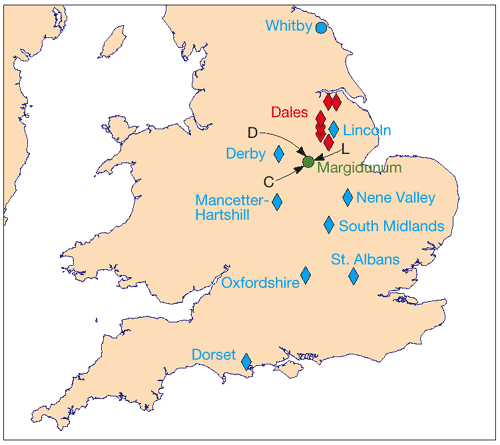
Whitby
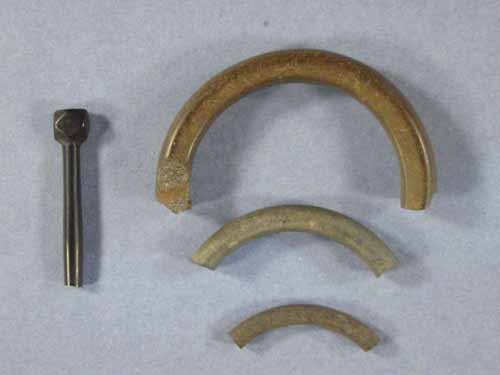
These fine objects are of shale and
jet. The pin has a very fine facetted head and may have been used to secure
an elaborate hair do or to secure a loosely woven cloak. Both the pins the bangles
have been brought to the site from elsewhere in Britain, perhaps from around
Whitby.
Nottingham University Museum Photo: Robin Aldworth
Dales & Lincoln
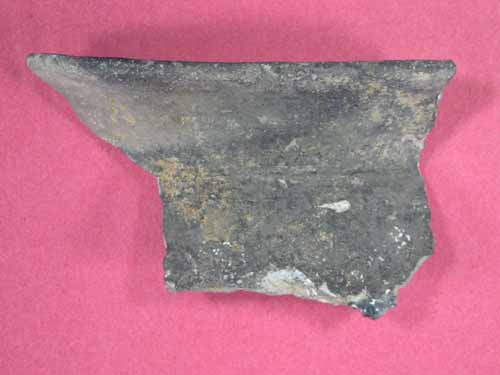
This type of jar (called Dales ware)
was made in Yorkshire and Lincolnshire and was very popular with both the army
and the civilians there in the later 3rd and 4th centuries.
Nottingham University Museum Photo: Robin Aldworth
Derbyshire
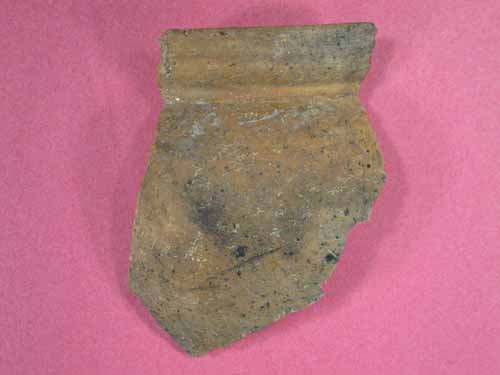
This rough jar has a cupped rim to hold
a lid and comes from near Belper. This sort of jar was found traded as far away
as Scotland and was popular in Derbyshire and the surrounding area from the
mid 2nd century to the mid 4th century.
Nottingham University Museum Photo: Robin Aldworth
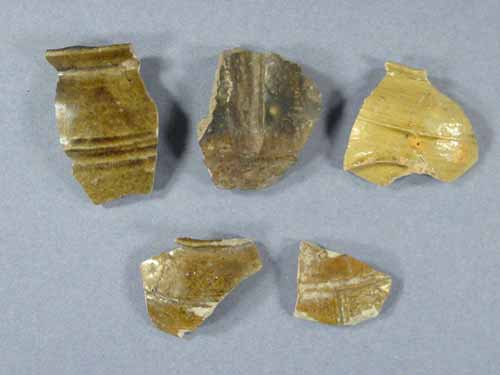
Five of several fine, glazed ware jars
and beakers found at Margidunum. Glazed wares are rare in the Roman period,
being characteristic of Mediaeval pottery. Fine glazed beakers and flagons were
produced by potters working outside the fort at Derby Little Chester during
the late first century AD and these vessels may come from there or, perhaps
from kilns associated with the 1st century occupation at Margidunum, yet to
be discovered.
Nottingham University Museum Photo: Robin Aldworth
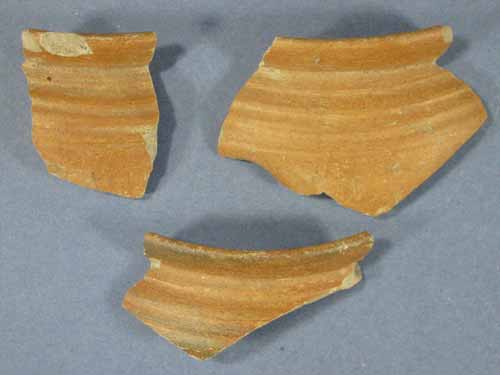
These fine beakers, in the same form
as the glazed ones made outside the fort at Derby Little Chester, have been
dipped in a mica-rich slip before firing. This gave them a metallic appearance,
which soil conditions have dulled. These probably cost less to make than the
glazed ones and less to buy than metal beakers.
Nottingham University Museum Photo: Robin Aldworth
Sarius
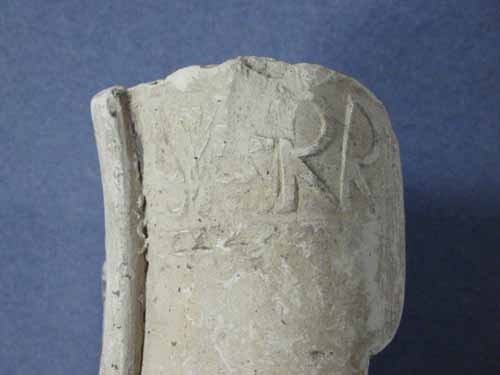
Making mortaria was a specialised skill
involving the throwing of large heavy bowls and the attachment of heavy rims,
specially shaped to make lifting the bowl easier. The potters of both samian
and mortaria often stamped the vessels with their names of the names of their
firms prior to firing the pots, probably as a sort of quality control. This
mortarium is from Mancetter-Hartshill near Coventry and is stamped “Sarrius”,
a well known potter working at Mancetter Hartshill in the mid-second century
and also at kilns near the fort at Doncaster.
Nottingham University Museum Photo: Robin Aldworth
Nene Valley
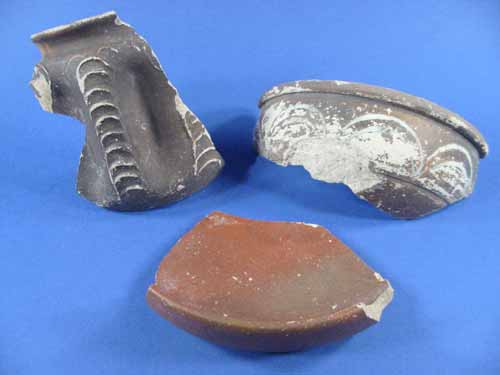
These sherds show us the range of fine
tableware traded from the Nene Valley kilns. From top left clockwise: a late
2nd-3rd century scale indented beaker, the scales have been applied like pastry
roundels and then the whole beaker has been dipped in a darker slip before firing;
a small bowl with white arcs painted after the darker slip has dried, 4th century
AD; a late 3rd-4th century AD platter.
Nottingham University Museum Photo: Robin Aldworth
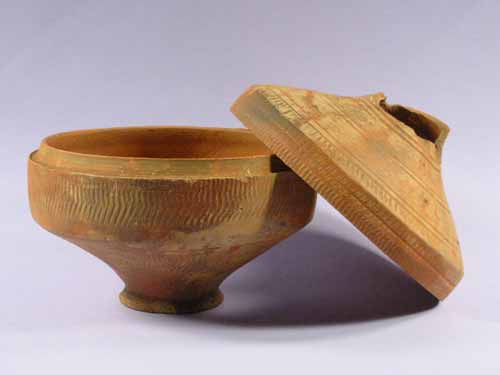
This elegant bowl and lid formed a set
and was bought from kilns in the Nene Valley in the 3rd AD. It may have been
used as a soup tureen.
Nottingham University Museum Photo: Robin Aldworth
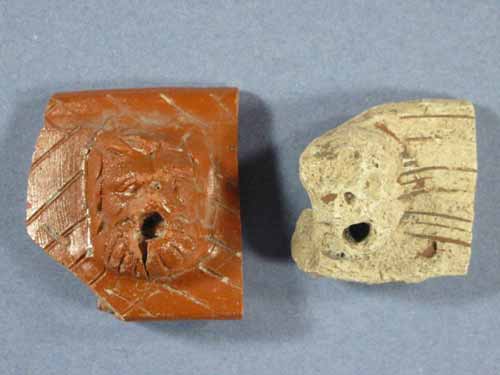
Here is a British copy (to right) of
the samian mortarium (to left). It was made at potteries in the Nene Valley
in the 3rd-4th centuries.
Nottingham University Museum Photo: Robin Aldworth

A close-up of a Nene Valley mortarium
with animal head spout, probably a lion, copying samian examples imported from
Gaul.
Nottingham University Museum Photo: Robin Aldworth
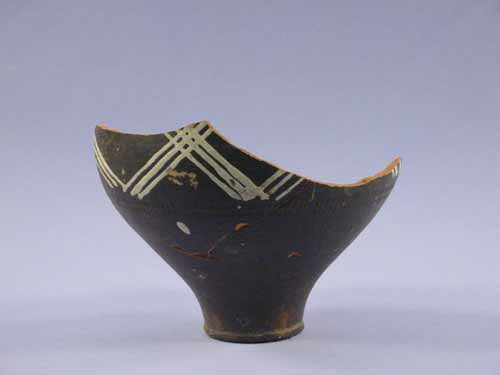
This fine beaker came from potteries
near Peterborough (Nene Valley) and
dates to the late third to mid-fourth century A.D. This type of beaker copied
very fine, thin walled types imported from Gaul, which are also found at Margidunum.
Nottingham University Museum Photo: Robin Aldworth
South Midlands
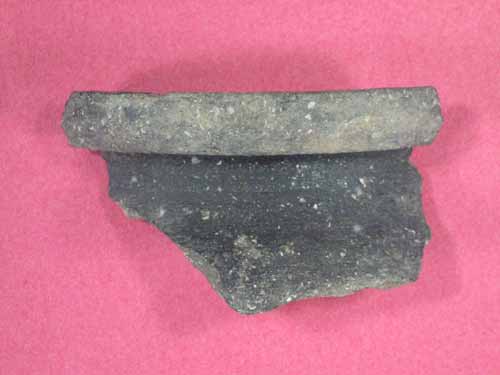
This is a late jar type made in the
South Midlands, perhaps around Greetham in Lincolnshire or in Bedfordshire.
Nottingham University Museum Photo: Robin Aldworth
Albinus
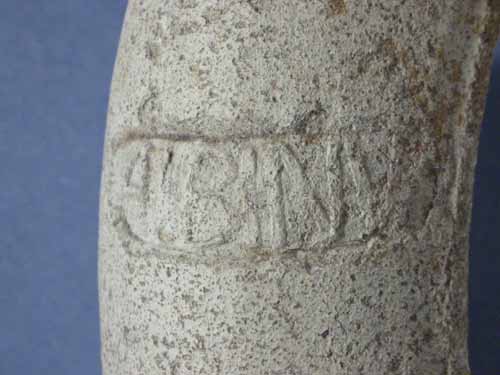
This mortarium is from St Albans and
is stamped by a man called Albinus who worked there in the late 1st century
having probably moved from kilns at Colchester.
Nottingham University Museum Photo: Robin Aldworth
Oxfordshire
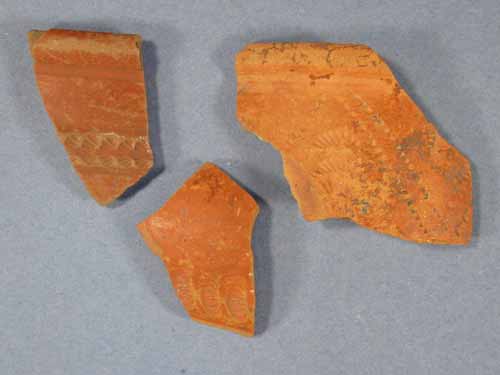
These sherds come from fine red ware
bowls supplied by large potteries near Oxford, which became very popular in
the 3rd and 4th centuries. Mortaria were also bought from the Oxford kilns.
Nottingham University Museum Photo: Robin Aldworth
Dorset
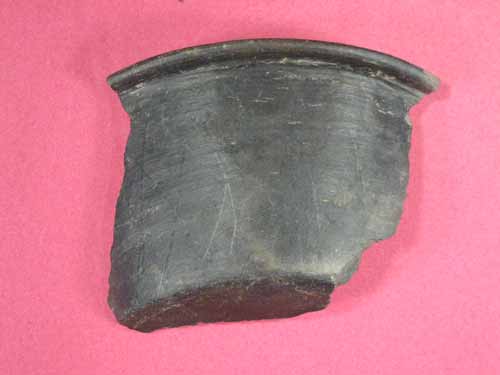
This bowl is from Dorset and the kilns
there produced thousands of jars and bowls in this ware for the army, distributing
them by sea up the coast to Hadrian’s Wall and the Antonine Wall.
Nottingham University Museum Photo: Robin Aldworth
Margidumum
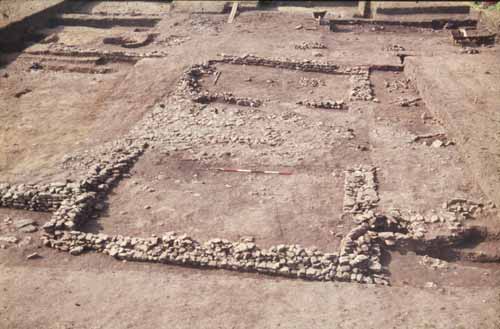
Remains of Building C showing how skerry
stone was used in the foundations.
Photo: M. Todd. Nottingham University Dept Archaeology (No B1798)
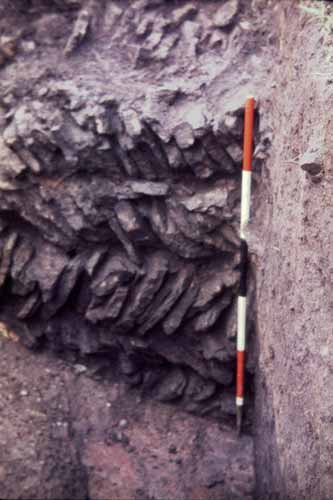
Pitched slabs of skerry in a wall trench
in building D.
Photo: M. Todd. Nottingham University Dept Archaeology (No B1408)
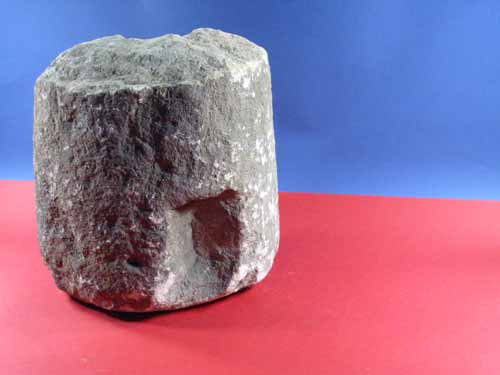
This limestone column may have been
attached to a wall to form a false pilaster (column projecting from a wall)
and demonstrates quite a Romanised taste in architecture.
Nottingham University Museum Photo: Robin Aldworth
